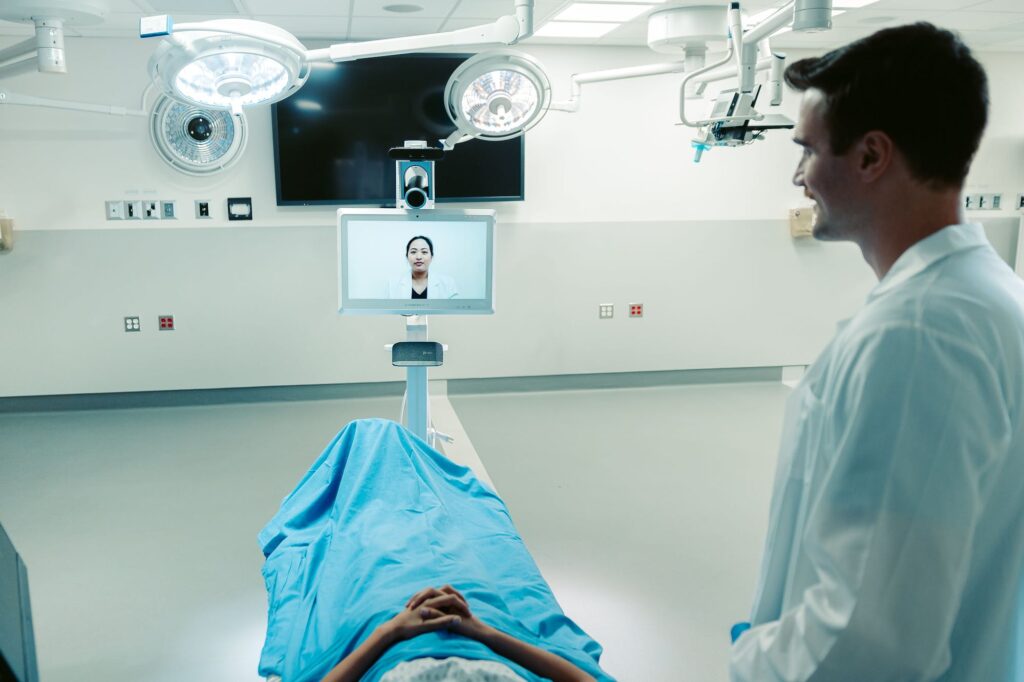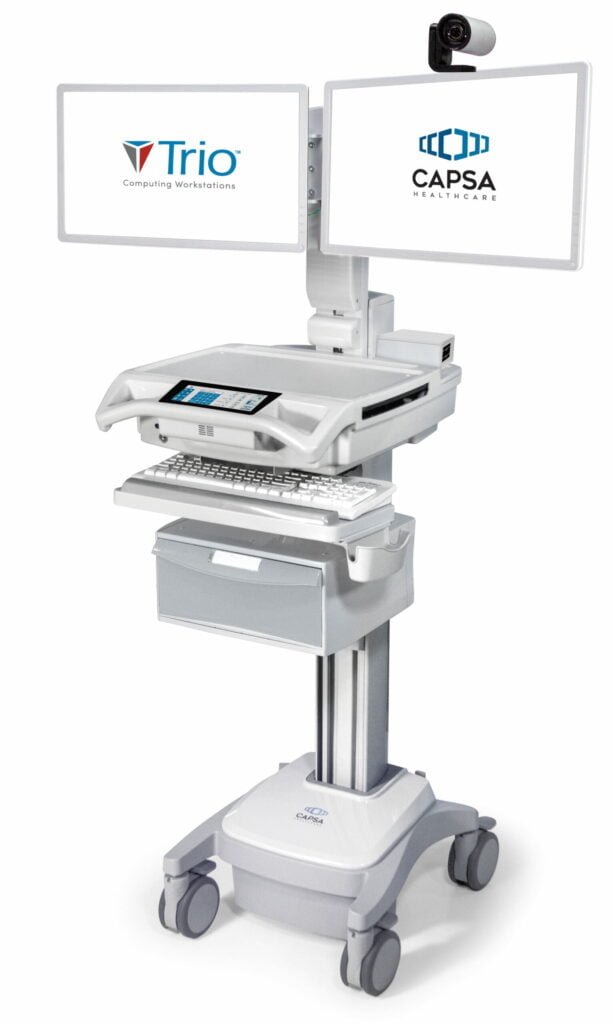
The COVID-19 pandemic has accelerated the growth of telemedicine technologies in healthcare settings. A telemedicine system uses audiovisual devices and other technologies to connect patients and remote providers. Practitioners can communicate with and treat patients through synchronous or asynchronous tools. This flexibility improves access to healthcare and gives doctors the freedom to provide care to the people who need it the most.
Adding telemedicine services to your workflow can open up new opportunities, but this process may also seem overwhelming and time-consuming. If you’re thinking about setting up virtual care options, Capsa Healthcare is here to help. Our simple guidelines will help you learn how to build a telemedicine system that best serves your doctors, medical staff, and patients.
What is telemedicine? Also known as telehealth, telemedicine refers to the use of communication and information technologies for the remote delivery of healthcare services.
Popular telemedicine services include:
Many healthcare organizations initially embraced telemedicine at the beginning of the pandemic, but this convenient practice is here to stay in many facilities.
Telemedicine offers many advantages for health professionals and patients, including:
Ready to start enjoying these benefits of telemedicine and others? Take the first steps to set up your telemedicine system today.
Setting up a telemedicine system requires a few simple steps. With the proper preparation and tools, you can efficiently provide virtual medical consultations and other patient services.
First, consider your overall goals for your telemedicine system. What outcomes do you hope to achieve by adding virtual services to your workflow?
For example, you may aim to use telemedicine to:
Once you’ve outlined your goals, it can be helpful to work with a healthcare solutions company like Capsa Healthcare to create a customized system that meets your unique needs. We can help you develop the perfect solution for every telemedicine service.

Treating patients with chronic and complex conditions often requires networks of doctors, specialists, and other healthcare staff. Telemedicine makes it easy to connect patients to specialists who can provide an expert level of care. For instance, a remote neurologist can provide timely treatment for stroke patients through telestroke consultations. Rural hospitals and providers can also benefit from scheduling virtual consultations with specialists whom patients may not otherwise be able to access.
Need help getting started? Capsa Healthcare can build a fully customizable mobile computing workstation, like the Trio Telemedicine Workstation, that enables remote specialists to examine and diagnose patients effortlessly.
Communication barriers present significant challenges to healthcare providers. Some disabled or non-English-speaking patients may struggle to convey their concerns, needs, and symptoms to medical staff. These miscommunications can cause frustration, misdiagnoses, and other adverse outcomes.
Video remote interpreting (VRI) addresses this issue by allowing patients and providers to communicate with the assistance of a third-party remote interpreter. Capsa’s expert team can design a mobile VRI cart that quickly connects your practitioners with a translator.
Patients in hospitals, nursing homes, and other healthcare facilities often want to visit with loved ones. However, many barriers, such as distance, illnesses, and quarantine regulations, can prevent family members and friends from visiting in person. Tryten’s virtual visiting cart built on the Capsa Healthcare Tryten S1 Tablet Cart allows patients to communicate with virtual visitors in real-time using a tablet computer and a video-conferencing application. This technology can alleviate patient loneliness and help family members stay updated about their loved one’s condition.
Manufacturers offer a range of telemedicine software to fit the diverse needs of clinicians and patients. Generally, it’s best to choose software that improves access to medical care for all patients. Look for software with these accessible features:
You can also choose telemedicine software that integrates Electronic Health Records. This feature can streamline workflows and make it easy for providers to receive and transmit patient records to other practitioners securely.
Your telemedicine solutions team can help you choose the right platforms and tools for your medical staff and patients. Capsa Healthcare’s mobile computing workstations are compatible with all major applications and telemedicine technologies, giving you the freedom to choose the best telemedicine software for your unique situation.
Once you’ve designed your telemedicine system, you’ll need to prepare your medical staff to effectively and legally implement the new tools. Strategies for training providers to use telemedicine include:
It will take time for medical staff to feel comfortable using new telemedicine tools. With patience and the right training, you can get your team up to speed and ready to start providing high-quality virtual care.
You’ll likely run into a few snags when implementing a new telemedicine system. Keep technical support staff on deck to assist patients and providers with any problems that may crop up.
Your healthcare organization’s information technology team may provide technical support for your telemedicine devices. These specialists can help you configure medical devices, help providers learn new technologies, and troubleshoot issues.
Additionally, Capsa’s team is available 24/7 with instructions and resources. We can help with every step of setting up a telemedicine system, including designing your workstations, assembling your carts, and adding accessories to accommodate your needs.
With the proper education and support, you can seamlessly integrate your new telemedicine system into your existing workflow.
A telemedicine system can revolutionize your healthcare organization. Providers can use video conferencing calls and other technologies to provide a range of accessible, affordable, and convenient virtual services. These remote offerings have many benefits for clinicians and patients, such as improving patient outcomes and reducing costs.
Are you ready to set up a telemedicine system? Capsa’s trusty telehealth solutions will enable you to deliver quality telehealth on the go. We designed our adaptable and agile workstations to be your medical staff’s sidekicks on wheels, traveling wherever patients need help.
Contact us today to set up a consultation. Together, we can build a ground-breaking telemedicine system that will allow you to provide top-notch care to patients in any location.